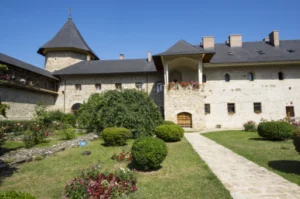San Antonio Leaders Advocate for Boldness, Vision and Collaboration in Growing San Antonio-Austin Region
By Edmond Ortiz, 1st April 2024
Introduction
San Antonio leaders are calling for boldness, vision, and collaboration to tackle the mounting challenges the city is facing as it contributes to the growth of an Austin-San Antonio super-region. Speaking at an event hosted by civic organization Center City San Antonio, former Mayor Henry Cisneros and Bexar County Commissioner Tommy Calvert, along with entrepreneur Beto Altamirano, urged local government and business leaders to step up their efforts in addressing various issues, including mass transportation, housing, jobs and water and power supplies.
One of the Nation’s Fastest-Growing Regions
Representatives of the Greater Austin-San Antonio Corridor Council described the Austin-San Antonio corridor as one of the nation’s fastest-growing regions, with a current population of over 5 million residents. They predict an increase of between 6 million and 7 million residents by 2030. Considering the recently released U.S. Census Bureau data, which states the San Antonio-New Braunfels metropolitan area’s population reached 2.7 million in the summer of 2023, the need for proactive policies and planning is evident.
Effective Urban Planning
Cisneros, a former secretary in the U.S. Housing and Urban Development Department during the Clinton administration, emphasized the importance of forward-thinking plans for the growth along the I-35 corridor. “If we don’t take smart action, we’re going to regret it because we’re going to be living in an area that has grown and will grow much faster,” he warned.
Addressing Challenges
Agreeing with Cisneros, Commissioner Calvert stressed that cities like San Antonio stand to benefit from implementing long-term planning policies. He attracted attention to the projected water shortages in the growing Western U.S. cities as a cautionary lesson. Calvert also highlighted the necessity to upgrade and modernize Texas’ power grid and urged for launching a commuter rail linking Austin and San Antonio.
Housing and Wealth Creation
Deciphering the relationship between housing and wealth creation, Calvert suggested, “The No. 1 way to build wealth is housing and home ownership,” stressing the importance of expanding housing affordability in the region. Entrepreneur Beto Altamirano echoed these sentiments, delineating priority areas like public transportation, education, and workforce development.
Protecting Local Businesses and Improving Quality of Life
Beto further vouched for the protection of small businesses, which play a significant role in attracting people to the cities and retaining local population. He maintained that both public and private sectors should work in collaboration to upgrade the quality of life, making the city more appealing for locals and outsiders.
Boosting Collaboration
All the panelists agreed on the importance of Austin and San Antonio viewing each other as collaborators rather than competitors. They opined that alliances in various areas, including public transit, educational opportunities, job creation, and even recreation, can bring mutual advantages.
Role of Leadership
Addressing the leadership role, the panel communicated the need for visionary, dynamic political and business leaders in both cities. These leaders must work alongside civic and community groups to find common ground on key issues and develop solutions for growth-related challenges. “Our leadership needs to take more risk, and it needs to be more visionary,” Calvert said.
Learning from Past Mistakes
Cisneros regretted his failure to take a staunch stand for commuter and light rail during his term as San Antonio’s Mayor. He acknowledged that misinformation spread by critics and opponents impeded the progress of pro-rail efforts. Echoing this sentiment, all the panelists stressed the urgency of high-speed rail systems to connect major Texas cities and overcome numerous financial, legal, and political obstacles.
While ending their meeting, the panelists hoped for committed and future-centric efforts from city leaders. The growth of this San Antonio-Austin corridor is inevitable. The focus should now be on how to steer it in the right direction.








